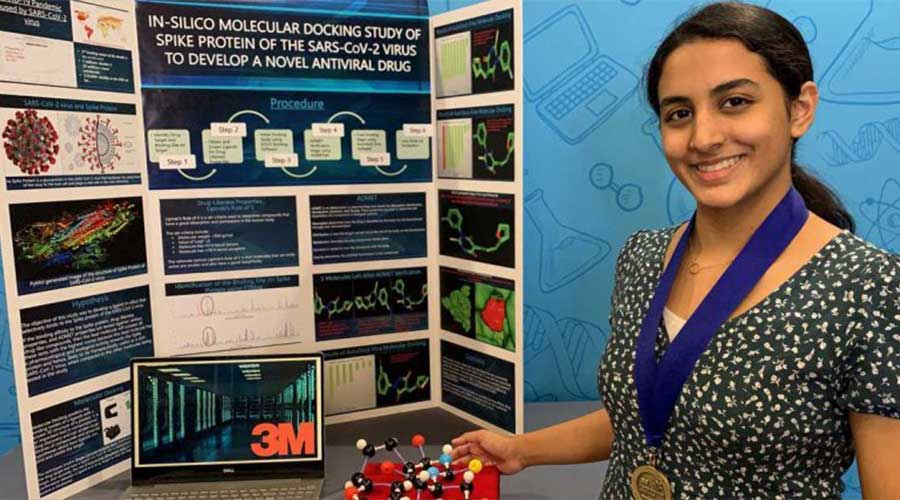Anika Chebrolu, a 14-year-old teen from Frisco, Texas, won a $25k prize for a discovery that could provide a potential therapy to Covid-19.
While all scientists are busy around the world in the race to find an effective coronavirus treatment, 14 years of a teenage girl, Anika Chebrolu, has just won the 2020 3M Young Scientist Challenge. She won a $25,000 prize for the discovery and earned international recognition.
Read more: Coronavirus remains active on human skin for nine hours, Japan study finds
Anika’s winning invention uses computer modeling to search for a compound methodology to discover a lead molecule that can selectively bind to the spike protein of the SARS-CoV-2 virus.
“The last two days, I saw that there is a lot of media hype about my project since it involves the SARS-CoV-2 virus and it reflects our collective hopes to end this pandemic as I, like everyone else, wish that we go back to our normal lives soon,” Anika teen told CNN about her potential Covid-19 discovery.
Initially, her goal was to use in-silico methods to identify a lead compound that could bind to a protein of the influenza virus.
“After spending so much time researching about pandemics, viruses, and drug discovery, it was crazy to think that I was actually living through something like this,” Anika said.
She added, “Because of the immense severity of the Covid-19 pandemic and the drastic impact it had made on the world in such a short time, I, with the help of my mentor, changed directions to target the SARS-CoV-2 virus.”
She ran these many compounds through iterative screenings on the computer, to assess their binding ability, molecular structure and drug-like characteristics, such as how they would break down in the human body and whether they could be toxic to cells.
Each screening narrowed her search, until she was left with one lead compound that could bind to the coronavirus and keep it from infecting cells.





















